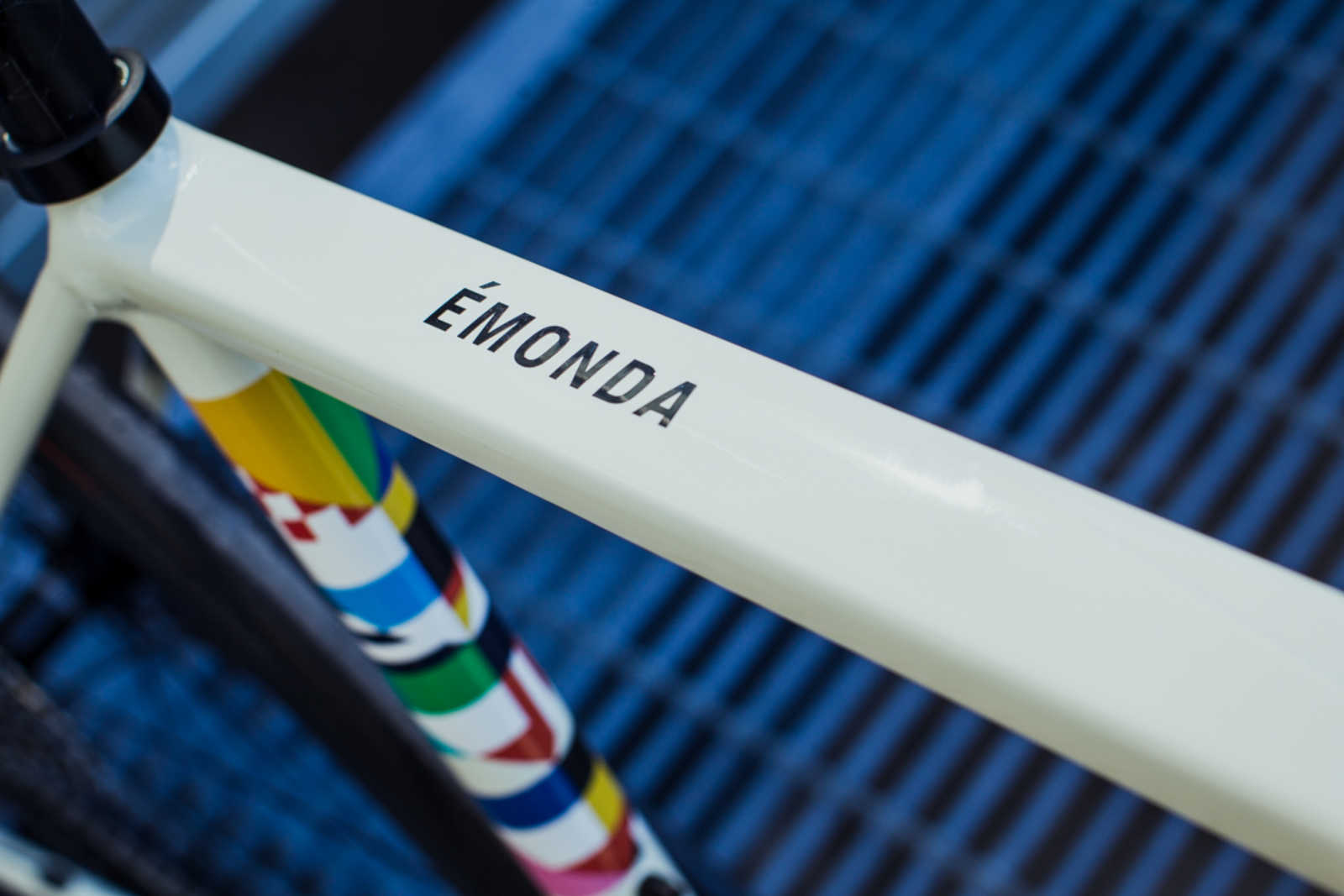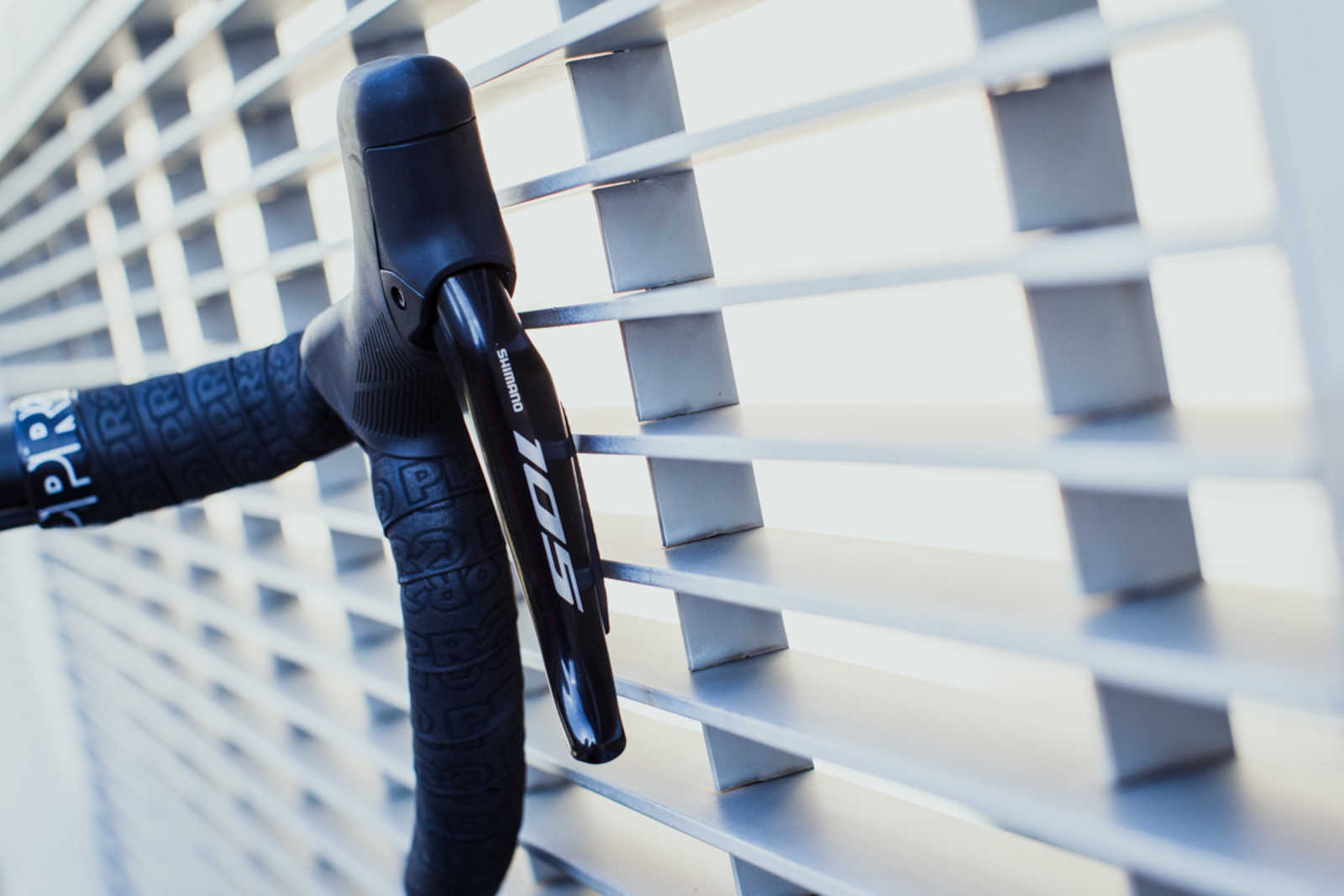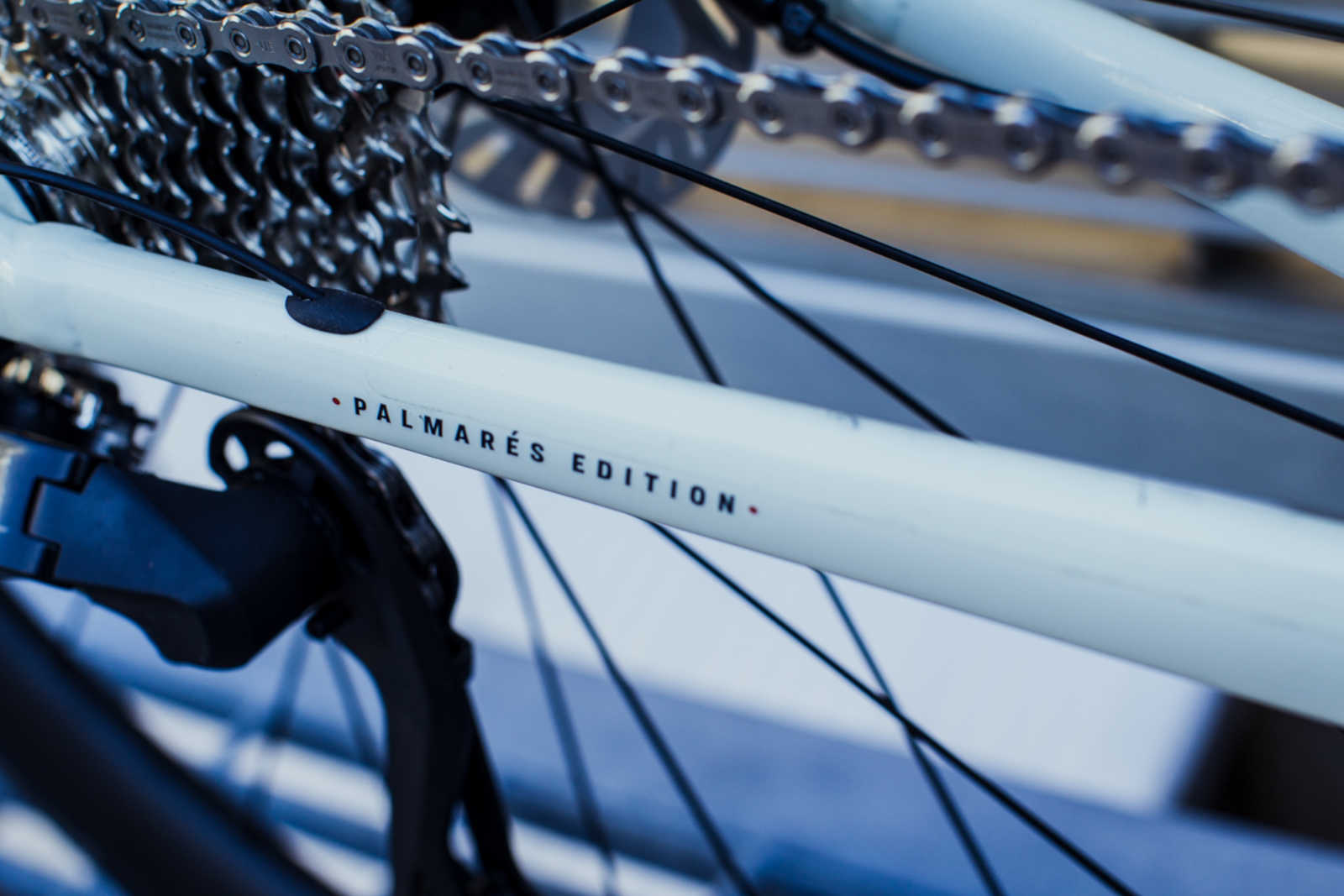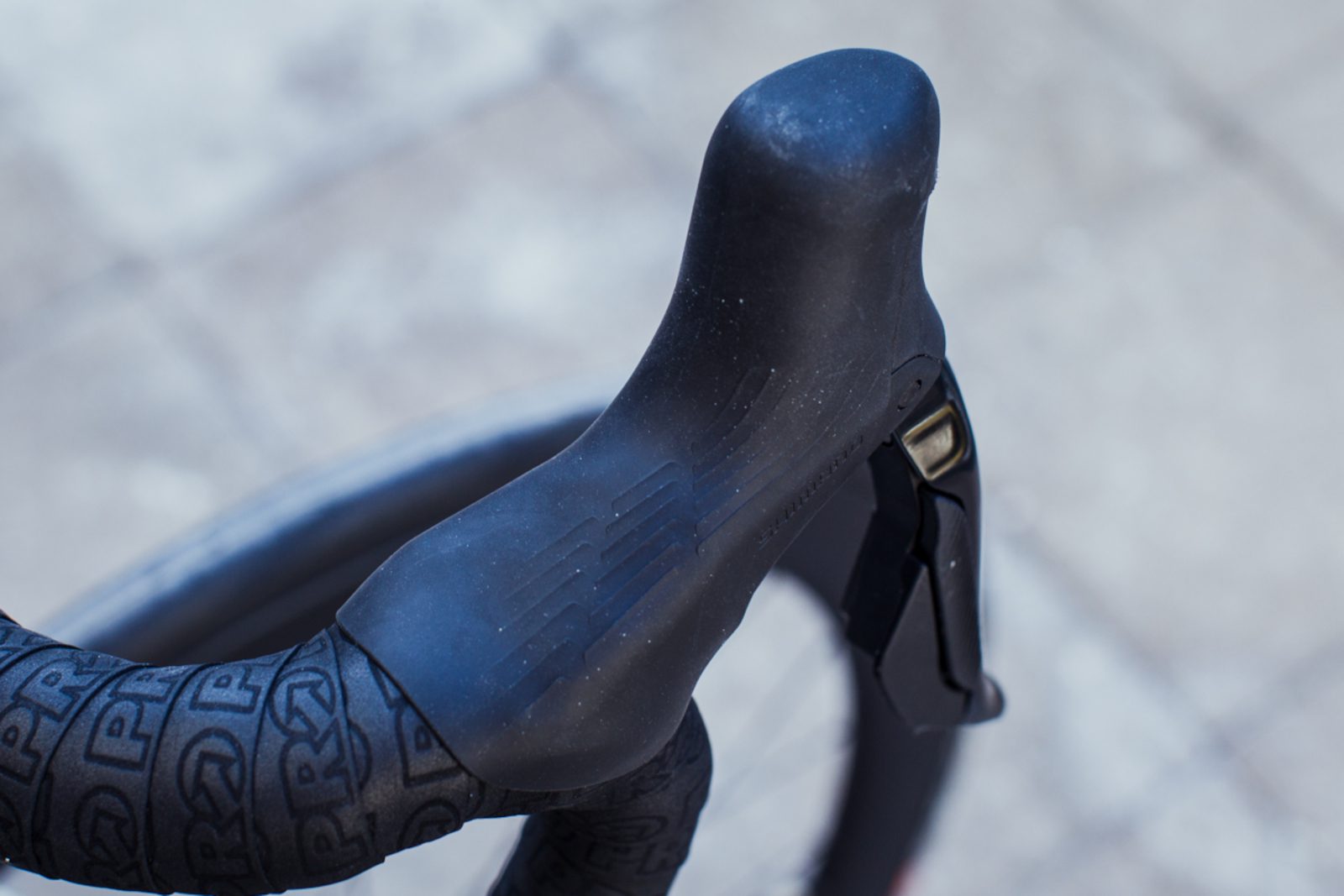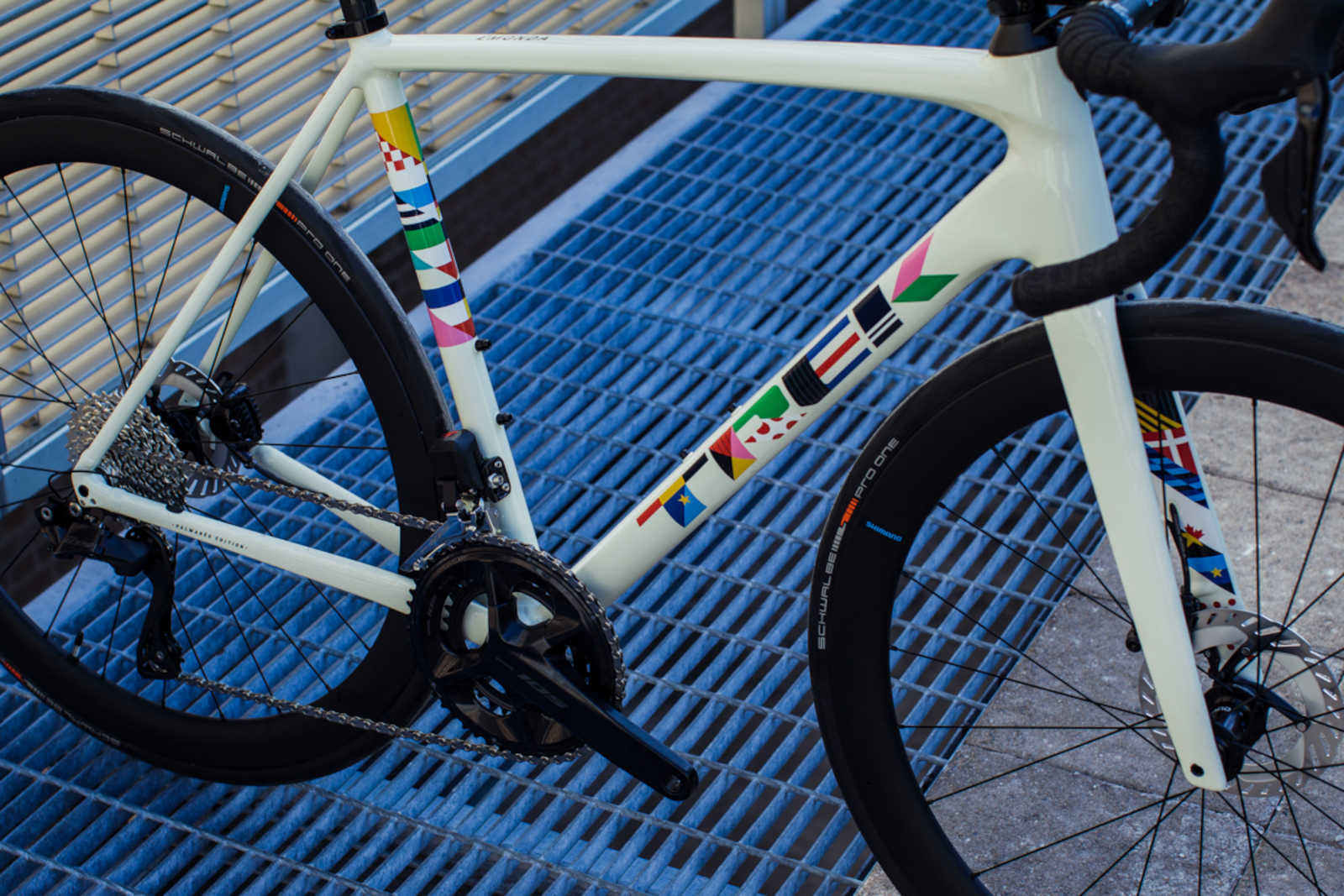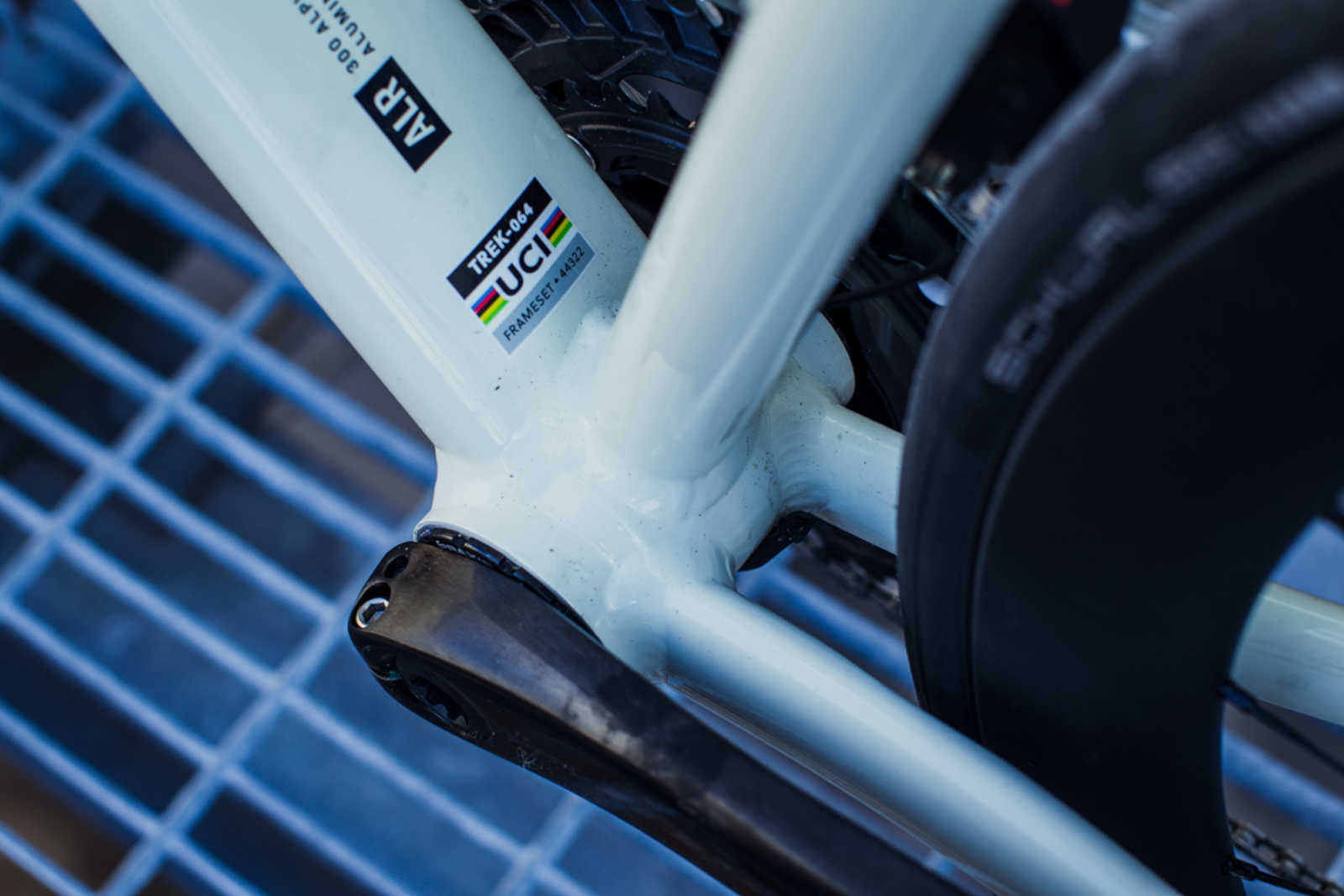First Look: Trek Émonda ALR: Aluminum, aero, and light
Third generation frameset includes many features from carbon versions
 Photo by:
Matt Stetson
Photo by:
Matt Stetson
On Thursday, Trek officially launched the latest version of its Émonda ALR, which was already available in Europe on April 6, to cyclists in US and Canada. The new aluminum frameset is strikingly similar to Trek’s carbon Émonda, featuring integrated cables and truncated airfoil tubes. It’s also share the same H1.5 geometry, so it’s aimed at racers. The current versions of Émondas SLR and SL have been around since 2020, and the latest version ALR aims to deliver much of the same attributes that have been seen in the pro peloton, but at a much more affordable price.
My test bike, the Emonda ALR Frameset, was custom built with Shimano 105 Di2 and outfitted with Pro components since it will serve as the test bed for a long term review of Shimano’s latest electronic groupset. Same as previous years, the latest 105 received trickle-down tech from its big brothers Dura-Ace and Ultegra, including disc brakes and electronic shifting for the first time. Much like the Emonda ALR, it mimics its higher priced sibling to an impressively high degree, at a significant lower cost. In Canada, the Emonda ALR will also be available in a stock build with complete Shimano 105 mechanical, if building from the frame up is not your thing.
A real looker
First off, I have to talk about the paint job of the ride that I am testing. It’s a stunning white with multiple colours on the logos. But each flourish actually means something. According to Trek, it’s a celebration of the company’s many successes on the road. “The paint job on the Emonda ALR Frameset is inspired by a previous P1 paint scheme called Palmares,” Trek’s Canadian marketing manager, Taylor Cook explains. “The Palmarès paint scheme is made up of quilt-inspired depictions of iconic team kits and champion jerseys from Trek’s vast history of sponsorships and race victories.”
It’s quite stunning and will definitely stand out when you show up to a race. The paint scheme isn’t just on the down and top tubes–you can see little hints on the inside of the fork.
Comfortable cockpit
My test ride is fully Shimano. The 105 groupset was matched with Pro Vibe handlebars and stem. It’s not an integrated bar and stem which is nice, as you’re not beholden to whatever length and width stem and bar that the bike is shipped with. The Pro Vibe bars felt great. I tend to ride on the hoods a lot, but one of my pet peeves with some handlebars is the length. I like to have a decent amount of real estate after the hooks, and the Pro Vibes had just that.
The drop is 130mm with a 78 mm reach and a 6 degree flare. Perfect for racing or long rides: I felt nice and aero in the drops. Those bars, along with a chunky but not too chunky hood, made for some comfortable riding whether I was up top or below. This build of Shimano 105 di2 and aluminum PRO Vibe components matches the Emonda ALR perfectly in function, aesthetic and design intent.
Fast and light
Trek says that the Émonda ALR is its lightest alloy road bike yet, built with 300 Series Alpha Aluminium, the full bike as built comes in at 8.80 kg. Just like its carbon predecessors, it is built with truncated airfoil tubes. So not only does it slice into the wind, but it makes for a lightweight bike when it gets hilly. When I took it out on some of the local climbs here, I immediately noticed the weight savings, but there was no compromise when it came to stiffness or handling. Having ridden several carbon bikes before, including the carbon versions of this frame, that was my initial concern. But after that first ride, it’s responsiveness when I’m out of the saddle, sprinting, or cornering, mirrors it’s carbon siblings. Since it comes with the same H1.5 race geometry, that’s not surprising.
Other aero features include integrated cables, which are practically de rigueur these days. But with Trek’s set up, you aren’t tied to a proprietary setup, nor are you forced to use electronic drivetrains, the Emonda ALR is mechanical shifting compatible. This flexibility paid off with my fit, I actually used a shorter stem on this build than some of my other bikes, but when I was doing the “look at yourself in the store window thing” that we all do when riding (come on, you do it too) and my back was flat and positioning was great.
105 goes electric
The shifting is crisp, clean and precise. Since this was ridden in the spring, I had been using my winter bike before this test, which has mechanical Dura-Ace. One thing that did take me a few days to remember is that the larger paddle clicks down, and the smaller goes up. It’s just a quick adjustment if you’ve been using mechanical STI before, but it may take a few rides to get used to.
I tested braking down some local descents and around a few race courses, and the modulation felt just as exact as Dura-Ace or Ultegra. It’s a nice-looking group as well. All black, which creates a sleek and stunning aesthetic. One of the big differences between 105 12 speed and Dura-Ace or Ultegra is you can’t use the satellite buttons that are so popular. For me personally, that’s not a problem, but if you rely on the extra shifters on other parts of your bars you may be disappointed. There’s also no power meter available, which for me was also not a concern as I have pedals that measure my watts. But it’s something to think about.
Weight-wise, the group comes in at 2,992 g, compared to Dura-Ace which is 2,514 g. But if you’re wanting value in an electric groupset, with disc brakes, the new 105 will certainly achieve this. I should note, that the Emonda ALR 6, that is equipped with 105 Di2, is not coming to North America, there will just be the one Emonda ALR 5 with 105 mechanical.
As far as the rest of the components on my test ride, the Pro Vibe alloy seatpost does its job while keeping things light. The Shimano C46 Tubeless WH-RS710-C46-TL-R wheels are fast and responsive, and do the trick. My hoops came with 28mm Schwalbe Pro One tires, which are grippy and fast, but seem wider, which isn’t a bad thing.
Good bye creaks
The Émonda ALR uses a threaded T47 bottom bracket. Trek says the move from press fit BBs will all but eliminate creaking.
Meant to be raced on
This is a bike that is meant for going fast. Unlike say, the Trek Domane SLR, there are no mudguard mounts or integrated frame storage. The official max tire clearance is 28 mm, but I will say Trek is being pretty conservative, and it will easily clear 30mm tires comfortably, and even larger depending on your comfort with clearance.
If you’re in the market for a bike that has all the qualities of a high-end racing machine, but at an affordable price, check out the new Trek Émonda ALR. The ALR 5 are available in Canada now, in an Azure/Coal colourway, and Black. The The Palmarès is available in Canada as frame only.
They are available to order now through your local Trek retailer. Select colors and sizes are in stock for purchase on trekbikes.com as well.
Trek Émonda ALR with Shimano 105 mechanical, $2,800
Trek Émonda ALR frameset: $1,500
